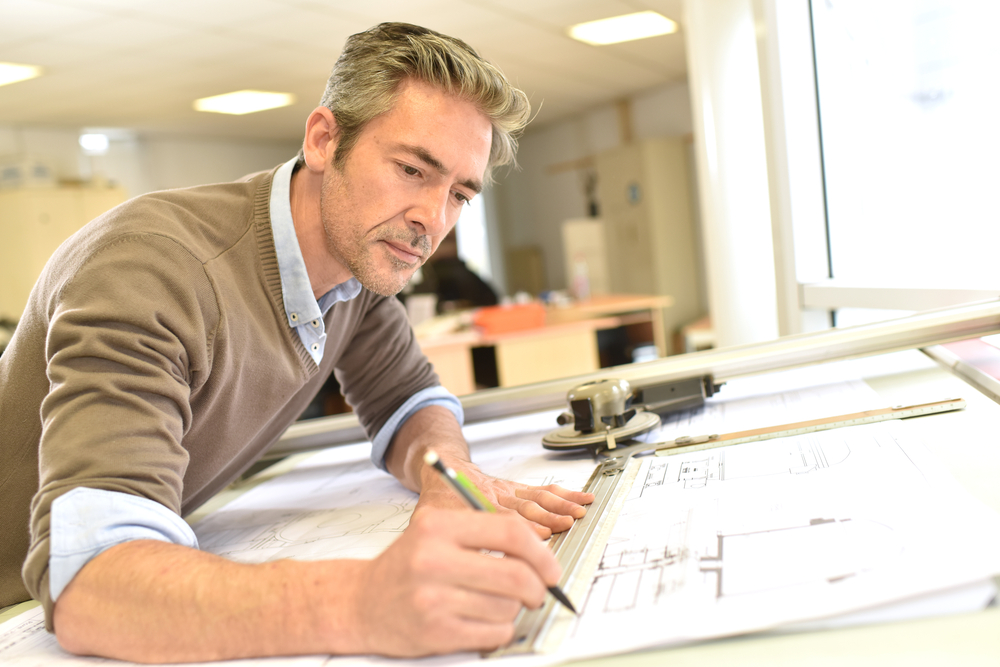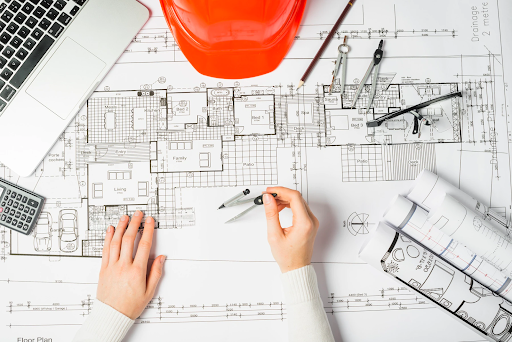Architect Rules for Designing Classic Interiors
Architect Rules for Designing Classic Interiors
Blog Article
Recognizing the Diverse Career Paths Available for Aspiring Architect
As an ambitious Architect, you have a world of career paths waiting on you. Each course supplies special difficulties and chances to apply your creative thinking and technological know-how. Whether you're drawn to standard architecture or the nuances of lasting design, there's a specific niche that straightens with your passions. Recognizing these diverse alternatives can shape your specialist journey, however which instructions will you select to check out initially?
Traditional Design: Designing Structures and buildings
Standard architecture concentrates on making structures and frameworks that blend performance with visual charm. As you explore this area, you'll appreciate the elaborate equilibrium between form and purpose. You'll find out to attract inspiration from historic styles, integrating aspects like symmetry, products, and workmanship. Your styles can reflect social heritage, showcasing neighborhood traditions while meeting contemporary needs.
You'll establish abilities in preparing, model-making, and site analysis, permitting you to imagine and connect your concepts properly. Engaging with customers, you'll need to comprehend their vision and convert it into feasible layouts.
Moreover, developing codes and sustainability practices are crucial in your work, guaranteeing your structures are safe and eco-friendly. As you grow in your occupation, you'll discover opportunities in property, commercial, or also repair jobs, each offering distinct obstacles. Accepting typical architecture leads the way for a fulfilling job that pays tribute to the past while shaping the future.
Urban Preparation: Forming Communities and Public Spaces
As an ambitious Architect, you can play an essential duty as an urban organizer, transforming how neighborhoods interact and function. By employing area involvement techniques, you'll ensure that citizens have a voice in forming their atmosphere. Plus, incorporating lasting layout concepts will certainly assist create spaces that not only meet today's demands however likewise protect the future.
Function of Urban Planners
While numerous could think of designers as the single enthusiasts behind structures, metropolitan organizers play a vital function in shaping the broader landscape of communities and public spaces. By teaming up with different stakeholders, you'll assist design parks, transport systems, and property locations that promote social interaction and accessibility. Your expertise in spatial layout and community dynamics enables you to picture future development while maintaining cultural heritage.
Community Involvement Approaches
Reliable area engagement techniques are crucial for urban planners to assure that the voices of locals are listened to and valued in the planning process. To promote purposeful dialogue, you must focus on open discussion forums and workshops where neighborhood members can reveal their concepts and concerns. Usage studies and social media sites to get to a more comprehensive target market, ensuring diverse viewpoints are included. Working together with neighborhood companies can boost trust fund and promote much deeper connections. It is essential to offer clear info regarding decision-making procedures and suggested jobs, permitting homeowners to really feel informed and equipped. By actively paying attention and incorporating comments, you'll produce rooms that reflect the neighborhood's requirements, inevitably leading to even more effective and lasting city settings. Accept transparency and continual dialogue for long-term influence.
Lasting Design Concepts
When designing metropolitan spaces, incorporating lasting design principles is essential for producing atmospheres that flourish both ecologically and socially. Think about incorporating environment-friendly rooms, like parks and gardens, to boost biodiversity and boost air top quality.
Designing with water conservation in mind is likewise essential-- consider rainfall yards and permeable surfaces to take care of stormwater. Including community members throughout the planning procedure warranties that the spaces you create satisfy their requirements and urge social interaction. By embracing these concepts, you'll add to vivid, sustainable metropolitan landscapes that benefit every person.

Landscape Design: Creating Sustainable Exterior Settings
As you check out landscape design, you'll find essential layout principles that produce useful and stunning outdoor areas. Sustainable methods play an important role in ensuring these environments thrive while lessening environmental impact. Plus, you'll locate a range of job opportunities that enable you to make a genuine distinction in how individuals communicate with nature.
Layout Principles in Landscape
Recognizing style concepts in landscape style is vital for creating sustainable outside settings that balance with nature. You'll require to consider components like equilibrium, scale, and proportion to guarantee your designs really feel natural and welcoming. Incorporating native plants not only boosts biodiversity but also lowers water use, making your landscape resistant. Think concerning the flow of room and how people connect with it; pathways and seating locations need to invite expedition and leisure. In addition, pay attention to seasonal adjustments, creating with materials that enhance the surroundings year-round (Architect). By focusing on sustainability and aesthetics, you can develop outside areas that enhance the neighborhood and advertise wellness. Welcoming these principles will certainly establish a strong structure for your occupation in landscape design.
Sustainable Practices Summary
Sustainable techniques in landscape style not just concentrate on appearances but additionally prioritize environmental wellness and source conservation. By incorporating indigenous plants, you improve biodiversity and decrease the demand for chemical plant foods and pesticides. Carrying out efficient watering systems aids conserve water and decreases overflow, securing neighboring ecosystems. You can develop spaces that advertise dirt health, such as using organic materials and exercising permaculture concepts. In addition, incorporating eco-friendly framework, like rain gardens and porous pavements, aids in stormwater administration and reduces metropolitan heat. You contribute to a healthier world and provide rooms that foster neighborhood link when you develop exterior settings with sustainability in mind. Inevitably, these methods guarantee your styles profit both people and the setting for many years ahead.
Career Opportunities Expedition
With a strong structure in lasting methods, landscape style offers a selection of job courses that enable you to make a purposeful influence on the environment. Urban planners frequently team up with landscape architects to develop green rooms in metropolitan setups, improving city livability. If you're enthusiastic regarding education, think about ending up being a landscape architecture educator, inspiring future generations.
Lasting Style: Focusing on Eco-Friendly Practices
As you discover your career in architecture, welcoming environmentally friendly methods can establish you apart in a competitive field. Lasting style concentrates why not find out more on creating buildings that decrease environmental effect while enhancing occupant health. By including renewable materials, energy-efficient systems, and sustainable building techniques, you'll add to a greener future.
Start by obtaining understanding of eco-friendly accreditations like LEED or BREEAM, which can reinforce your qualifications. Consider just how natural light, ventilation, and thermal efficiency can enhance layout. Collaborate with engineers and ecological experts to introduce services that reduce waste and save resources.
Do not forget the significance of area involvement-- appealing neighborhood stakeholders can influence designs that harmonize with the atmosphere. As clients significantly focus on sustainability, your knowledge in environmentally friendly methods will certainly not just draw in jobs but likewise meet your interest for liable architecture. Embrace this essential element of the profession, and enjoy your occupation grow.
Historical Preservation: Safeguarding and Restoring Cultural Heritage
While you start on your architectural journey, take into consideration the vital duty of historical preservation in preserving our social heritage. This area concentrates on the defense and repair of considerable structures, websites, and frameworks that inform the tales of our past. By participating in historical preservation, you'll help safeguard the building heritage that shapes community identity.
As a historical conservation Architect, you'll examine historical importance and assess the problem of frameworks. You'll work carefully with preservationists and historians to assure genuine restoration techniques are employed. This job course enables you to mix imagination with research, enabling you to design options that value initial products and craftsmanship.
Your job not only adds to sustainability by reusing existing structures yet additionally promotes a sense of pride within areas. Accepting this course will certainly assist you end up being a guardian of history, maintaining the stories and looks that enhance our lives.
Inside Architecture: Enhancing Indoor Spaces
Historic conservation and interior design both share a dedication to enhancing the developed environment, yet they focus on different facets. While historic conservation highlights preserving a framework's historical and social worth, interior design absolutely nos in on maximizing interior rooms for performance and looks.
As an ambitious Architect, you'll locate that interior style permits you to blend imagination with technological abilities. You'll develop rooms that not just look excellent yet likewise advertise convenience and performance. This area includes comprehending just how light, color, and materials engage within a room, impacting state of mind and usability.
You'll work with different tasks, from domestic homes to industrial offices, making sure that each setting satisfies the requirements of its occupants. By prioritizing user experience, you can transform insides into motivating and useful areas, making a significant influence on exactly how individuals interact with their surroundings. Welcome the possibility to boost interior atmospheres and form the means individuals live and function.
Industrial Design: Merging Performance With Aesthetic Appeals
Industrial design plays an important function in creating items that flawlessly mix aesthetics with functionality, guaranteeing that what you make use of day-to-day is not only aesthetically enticing but likewise useful. As an aspiring Architect, you might involve yourself in this field, concentrating on creating every little thing from furnishings to consumer electronics. Your work includes understanding customer needs, products, and producing procedures, permitting you to create cutting-edge services that enhance daily experiences.
In commercial design, you'll typically collaborate with online marketers, designers, and suppliers, making sure that your designs are not only stunning but likewise possible. You'll discover to balance form and function, focusing on functionality without giving up design. By developing your skills in mapping out, 3D modeling, and prototyping, you'll be well-equipped to bring your concepts to life. This profession path supplies a vibrant atmosphere where creativity fulfills practicality, making it a satisfying option for designers thinking about shaping the items of tomorrow.
Frequently Asked Concerns
What Educational Accreditations Do I Required to End Up Being an Engineer?
To become an engineer, you'll need a professional level in design, usually a Bachelor's or Master's. Your Domain Name Furthermore, you'll have to complete an internship and pass the Architect Registration Evaluation to practice legally.
Exist Accreditation Demands for Various Building Career Paths?
Yes, there're certification needs for different building paths. Architect. You'll need to pass exams, complete internships, and occasionally pursue specialized training, depending upon your picked emphasis, like landscape architecture, city design, or historical preservation
What Software Skills Are Crucial for Architects Today?

Just How Can I Gain Practical Experience While Researching Design?
You can obtain functional experience by interning at architectural companies, joining design competitions, offering for area jobs, or collaborating with classmates on real-world projects. These chances enhance your abilities and build valuable links in the industry.
What Task Opportunities Exist Outside Conventional Design Firms?
You can check out numerous job chances outside conventional style firms, like metropolitan planning, interior decoration, landscape style, building administration, property growth, and even functions in sustainability consulting. Each deals special challenges and incentives.
Whether you're drawn to conventional architecture or the subtleties of sustainable style, there's a particular niche that straightens with your rate of interests.When developing urban spaces, integrating lasting layout concepts is essential for developing atmospheres that prosper both environmentally and socially.As you discover landscape style, you'll uncover necessary design principles that produce functional and gorgeous outside rooms.Understanding layout principles in landscape design is crucial for developing sustainable outdoor environments that harmonize with nature.In industrial style, you'll usually team up with engineers, suppliers, and marketing experts, ensuring that your layouts are not only gorgeous however also feasible.
Report this page